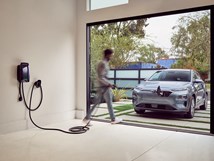EV Battery Materials Specialist Raises $70 Million
Sila Nanotechnologies, which began a partnership with BMW AG in March to adapt its next-generation battery material for automotive applications, has raised $70 Million in Series D funding.
#economics #hybrid
California-based Sila Nanotechnologies Inc., which began a partnership with BMW AG in March to adapt its next-generation battery material for automotive applications, has raised $70 Million in Series D funding.
The developer’s silicon-based anode material is designed to replace conventional graphite electrodes in lithium-ion batteries, which the developer claims can boost energy capacity by as much as 40%. The materials promise to boost energy density, increase cycle life and reduce material expansion.
To date, most gains in battery life have been made by improving cathode materials. Finding alternatives to graphite anodes has proven more difficult due to durability issues.
Sila’s technology packs silicon atoms inside a matrix of tiny nanoparticles. The design allows lithium ions to expand into empty spaces as they are absorbed into the anode rather than pushing against the structure.
Sila also is targeting applications for consumer electronic devices, electric airplanes and the electric grid. The startup aims to launch the technology early next decade in small electronic devices.
With the new funding, which was led by existing investor Sutter Hill Ventures, Sila has raised $125 million since its 2011 launch. New investors that include Siemens-backed Next47 and Amperex Technology join Sutter Hill and previous investors Bessemer Venture, Matrix Partners and Samsung.
RELATED CONTENT
-
On The Jeep Grand Cherokee, 2022 Nissan Pathfinder, and More
An inside look at the Detroit Assembly Complex-Mack; a innovative approach to waste-free, two-tone painting; why a forging press is like an F1 car; and other automotive developments.
-
Frito-Lay, Transportation and the Environment
Addressing greenhouse gas reduction in the snack food supply chain
-
On Automotive: An All Electric Edition
A look at electric vehicle-related developments, from new products to recycling old batteries.








